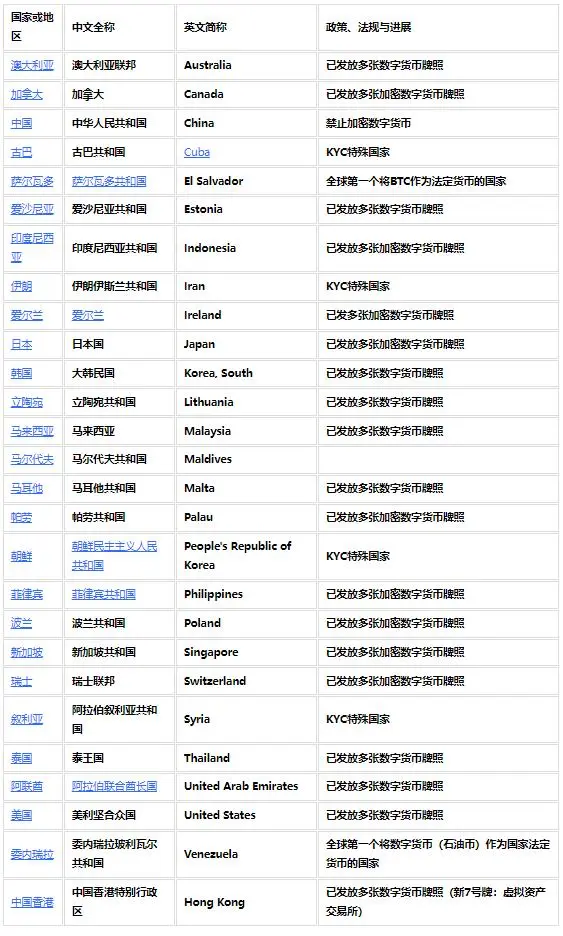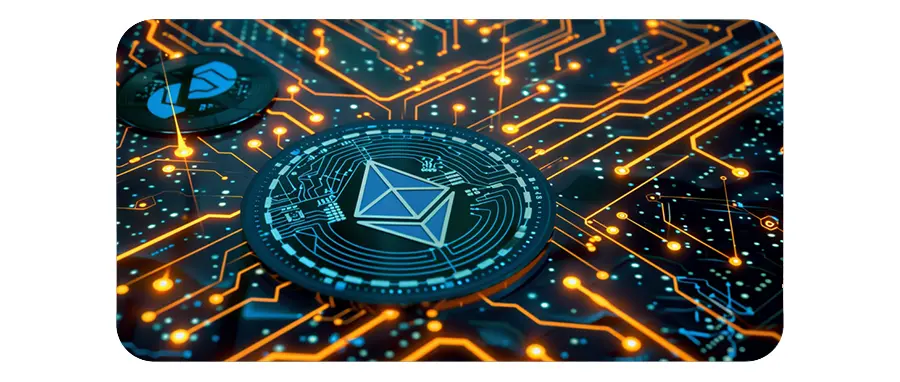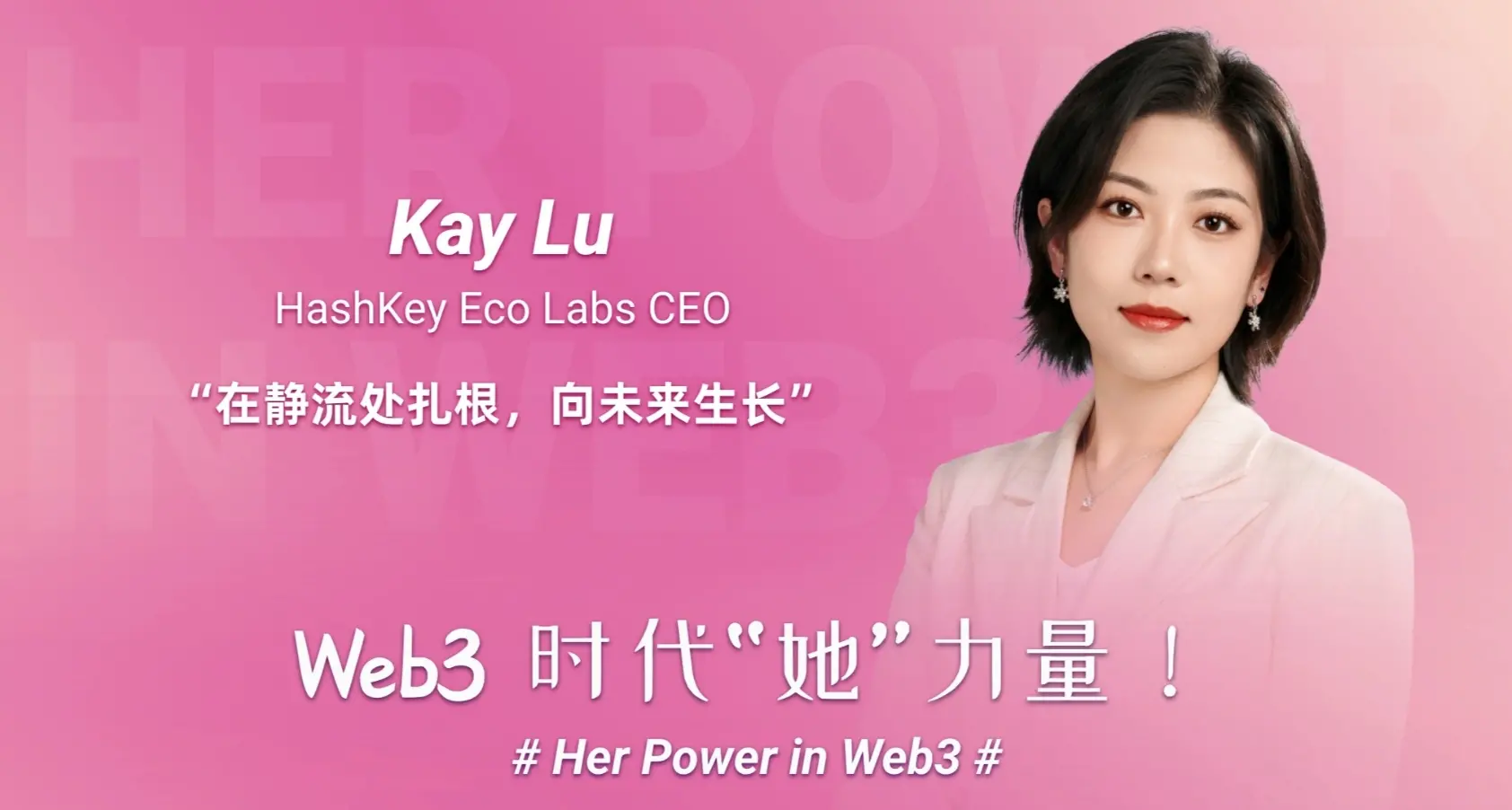Written on Hong Kong Blockchain Week: Analysis of the "International Compliance" Path for Web 3.0
Author: Hu Changming
Editor: Jerry@TPDAO
Introduction:
Since the new cryptocurrency policy in Hong Kong, many insightful friends in the domestic venture capital community have attempted to enter the crypto world through the compliant market in Hong Kong, thereby completing the iteration of their projects from Web 2.0 to Web 3.0. Practice has proven that this path is feasible, but it also comes with some difficulties. The best approach is to be based in Hong Kong while looking globally. On the occasion of the 2024 "Hong Kong Blockchain Week," we have sorted out the issues and paths of "international compliance" in Web 3.0, to benefit domestic Web 3.0 practitioners who are trying to integrate into the crypto world through Hong Kong compliance.
I. Overview of Web 3.0
Web 3.0 is often compared with Web 2.0 and Web 1.0. Web 1.0, also known as the static web, was the first iteration of the internet, consisting of simple static websites accessible via browsers; Web 2.0, also known as the interactive web, introduced more complex features such as search engines and social media, allowing for greater interactivity and online collaboration; Web 3.0 is a decentralized network based on blockchain technology, representing the next generation of internet infrastructure.
Web 3.0 is built on decentralized technologies like blockchain, which can enhance the security and control of personal data, meaning users can interact with Web 3.0 applications more securely and privately, and have more control over the information shared on the internet. Web 3.0 envisions a more open and secure internet, allowing users to control their data and eliminating the need for central authorities.
Key Features of Web 3.0 Include:
1.1. Decentralization: Web 3.0 is built on blockchain technology and does not rely on centralized servers. Instead, it consists of a decentralized network made up of nodes distributed globally, without a single point of control, maintained and managed collectively by multiple nodes, where changes in a single or few nodes do not affect the entire network.
1.2. Immutability: Due to its decentralized nature, decisions made by a single or few nodes cannot alter the data of the entire network. Once information is recorded on the blockchain, it cannot be changed or deleted, ensuring fairness and trustworthiness of all data across the network.
1.3. Traceability: All data in Web 3.0 is open and transparent to all nodes, making all data traceable, which promotes transparency and openness of information and reduces issues of information asymmetry.
1.4. Smart Contracts: Smart contracts in Web 3.0 can realize code as law, featuring programmability and interoperability, enhancing the scalability and flexibility of systems, allowing them to better respond to future development needs.
1.5. Censorship Resistance: Web 3.0 does not rely on the credibility of any intermediary or public authority, removing the monopoly and control of centralized institutions over users, inherently possessing censorship resistance and anti-blockade properties, allowing for freer information dissemination.
1.6. High Security: The Web 3.0 network is less susceptible to attacks or paralysis because there is no single target for attacks, and no single point of failure risk. Data is distributed across multiple nodes in the network, eliminating single points of failure, making the system more stable and reliable.
1.7. Community Autonomy: Web 3.0 implements community autonomy with decentralized autonomous organizations (DAOs), being open, fair, inclusive, and allowing users to have a greater say in the direction of the platforms they use, promoting autonomous, free, equal, and democratic application scenarios, conducive to achieving fairer and more equitable resource distribution, reducing social inequality.
1.8. Data Ownership: Web 3.0 users have more privacy rights and data control, truly realizing data ownership. For example, in online games, through Web 3.0, users can own non-fungible tokens, meaning that even if they stop playing the game or the game creator deletes their account, they can retain ownership of their in-game items.
1.9. Privacy Protection: Web 3.0 implements de-intermediation in identity management, where accounts serve as identities, providing a single, secure login for cross-censorship and anonymous platforms, supporting decentralized identity verification and the realization of digital identities, maximizing the protection of user privacy.
1.10. Cryptographic Digital Currency: Web 3.0 can realize consensus as value, inherently possessing the attributes of cryptographic digital currency, promoting the development of new finance, reducing transaction costs and intermediary fees.
1.11. Decentralized Applications (DApps): In Web 3.0 projects, holding tokens equates to being a user, reconstructing traditional business models, encouraging more innovation and experimentation, as decentralized networks are more flexible. In the Web 3.0 ecosystem, anyone can create value and achieve returns through developing smart contracts, building decentralized applications (DApps), participating in cryptocurrency trading, etc. This open and inclusive innovative environment helps stimulate more innovative vitality, driving continuous evolution of technology and business models.
1.12. Globalization: Web 3.0 inherently possesses global attributes, breaking geographical limitations, allowing people to conduct cross-border transactions and collaborations more freely, promoting globalization and international cooperation, providing opportunities for economic development in different countries and regions. Web 3.0 offers a more open and transparent market mechanism, supporting a more open and easier network participation mechanism, lowering entry barriers, promoting competition and innovation, providing a broader stage for innovators, and attracting more talents and project participants.
II. Analysis of Major Compliance Issues in Web 3.0
Due to the uniqueness of Web 3.0, it may involve many areas that require regulation by national authorities, making it very important to ensure compliance of Web 3.0 projects.
Major Compliance Issues in Web 3.0 Include:
2.1. Legal and Regulatory Compliance: Web 3.0 projects should comply with the laws and regulations of their location, including but not limited to corporate law, data privacy law, digital asset law, etc. Compliance teams should work with local legal advisors to ensure the project is legal and compliant. If the project involves cross-border business, it is necessary to consider the laws and regulations of different countries and regions to ensure the project is legal and compliant globally.
2.2. KYC/AML Compliance: Web 3.0 projects should implement KYC (Know Your Customer) and AML (Anti-Money Laundering) measures to prevent triggering illegal activities such as money laundering and terrorist financing in their location. These measures may include real-name verification, identity proof, transaction monitoring, etc.
2.3. Data Security Compliance: Web 3.0 projects should take measures to protect user data security, comply with local data protection laws and regulations, and promptly disclose data breaches and other security incidents.
2.4. Privacy Protection Compliance: Web 3.0 projects should prioritize user data privacy protection, comply with local data privacy regulations, and take measures to protect users' personal data from misuse or leakage.
2.5. Technical Security Compliance: Smart contracts play a crucial role in Web 3.0, so their compliance and security must be ensured. Web 3.0 projects should review smart contract code to ensure it complies with local laws and regulations and does not contain any vulnerabilities or security risks.
2.6. Financial Regulatory Compliance: Web 3.0 projects involving cryptocurrency and digital asset trading need to comply with relevant financial regulatory laws in their location, including but not limited to securities law, currency law, payment law, etc.
2.7. Community Governance Compliance: The community governance mechanism of Web 3.0 projects should be compliant, adhering to community norms and local laws and regulations to ensure the safe and stable operation of the community.
2.8. Social Media and Advertising Compliance: When promoting projects on social media, Web 3.0 projects must comply with local social media policies and regulations to prevent false advertising, rumors, and other violations. When conducting advertising promotions, they must comply with advertising laws to ensure that the content is truthful, legal, and compliant.
2.9. Audit Compliance: Web 3.0 projects should conduct regular compliance audits to ensure compliance with local laws, financial regulations, and technical standards, and promptly adjust and improve compliance measures.
2.10. Compliance Reporting and Disclosure: Web 3.0 projects should regularly submit compliance reports to local regulatory authorities and publicly disclose project operation status, financial conditions, and other information to ensure transparency and compliance.
III. Compliance Solutions for Web 3.0 Projects
If a Web 3.0 project involves cryptocurrency, it falls under the compliance level of financial project regulation. To achieve global compliance for Web 3.0 projects, the following principles should be followed:
First, in certain special countries and regions, such as North Korea, Cuba, Iran, Syria, etc., implement strict KYC review systems, and do not conduct business with clients from these regions until obtaining local cryptocurrency licenses or Web 3.0 licenses.
Second, in all countries and regions that have officially established relevant cryptocurrency or Web 3.0 laws and policies, such as Australia, Canada, Estonia, Indonesia, Japan, South Korea, Lithuania, Malaysia, Malta, Palau, the Philippines, Poland, Singapore, Switzerland, Thailand, the UAE, the USA, Hong Kong, etc., implement strict KYC review systems. For clients from these regions, business can only be officially conducted after obtaining licenses issued by local authorities allowing cryptocurrency or Web 3.0 operations. Applications can be made directly for local compliance licenses, or existing local compliance licenses can be acquired, or shares in existing local compliance licenses can be held, or existing local compliance licenses can be borrowed as business channels, etc.
Third, in all countries and regions that have not officially established relevant cryptocurrency or Web 3.0 laws and policies, implement strict KYC review systems, and business can be conducted normally with clients from these regions. For example, in jurisdictions like the Cayman Islands, BVI, Bermuda, where legal policies are relatively free, normal business licenses can be registered, with business scopes as broad as possible, including "Internet technology development and promotion," "blockchain technology development and promotion," "artificial intelligence technology development and promotion," "venture capital," "investment consulting," etc.
Specific Compliance Measures Include:
3.1. KYC/AML and Cross-Border Transaction Compliance
The KYC (Know Your Customer) and AML (Anti-Money Laundering) requirements in traditional financial systems are often difficult to implement in decentralized networks. Due to the anonymity and decentralized characteristics of the Web 3.0 environment, it is challenging to effectively verify the identities of transaction participants, making it difficult to meet KYC/AML requirements, leading to regulatory challenges. Transactions in the Web 3.0 environment may be more anonymous and decentralized, but many countries and regions' laws require identity verification and KYC/AML checks. Therefore, corresponding solutions need to be developed to meet these requirements. The global nature of Web 3.0 leads to an increase in cross-border transactions, but the significant differences in laws and regulations across different countries and regions make cross-border transaction compliance more complex. Especially for cross-border transactions involving cryptocurrencies, their anonymity and traceability often make them channels for money laundering and terrorist financing. Since Web 3.0 is a global network, situations involving cross-border transactions and collaborations are common, so it is essential to consider the laws and regulations of different countries and regions and ensure compliance with applicable legal standards in cross-border transactions. Solutions include:
- Developing decentralized identity verification systems to ensure the authenticity of transaction participants' identities;
- Integrating KYC/AML check processes into blockchain transactions to ensure compliance with legal requirements;
- Collaborating with legal experts to ensure transactions and contracts comply with cross-border legal requirements;
- Developing cross-border transaction compliance solutions to ensure legality and effectiveness across different jurisdictions.
3.2. Data Security and Privacy Protection Compliance
In the Web 3.0 environment, personal data privacy protection still faces challenges. Traditional data privacy legal frameworks typically rely on centralized data management institutions, whereas in the decentralized Web 3.0 environment, data transmission and storage are more decentralized, and personal data storage and transmission are more dispersed and anonymous. Therefore, it is necessary to ensure the privacy and security of data. When designing and implementing Web 3.0 applications, data privacy laws and regulations must be considered, and corresponding measures must be taken to protect user data.
Solutions include: Developing encryption and privacy protection technologies to ensure the security and privacy of user data; collaborating with data protection experts to ensure applications comply with applicable data privacy regulations.
3.3. Technical Security Compliance
Web 3.0 technology is a new type of internet technology built on blockchain and cryptocurrencies, enabling the creation, deployment, and operation of decentralized applications (DApps). Given that it involves digital assets and decentralized transactions, security and compliance become crucial considerations. Solutions include:
Encryption and Key Management: Protecting private keys is vital, as they control users' assets on the blockchain. Use secure hardware wallets or multi-signature schemes to protect private keys. Additionally, ensure encryption technology is used when transmitting data.
Smart Contract Security: Smart contracts are core components of Web 3.0 technology, so their security must be ensured. Conduct thorough security audits and follow best practices, such as simplifying contracts, avoiding reentrancy attacks, and ensuring correct permissions.
Security Education and Training: Providing security training and education for developers and users is essential. Ensure they understand common security threats and preventive measures, as well as actions to take when encountering security issues.
3.4. Financial Regulatory Compliance
Web 3.0 platforms may involve issuing cryptocurrency tokens or conducting decentralized finance (DeFi) transactions, which raises compliance issues with securities laws. According to the securities laws of different countries or regions, tokens that meet the definition of securities must be registered, reported, and regulated. Compliant Web 3.0 platforms should adhere to the securities laws and regulations of their location to ensure their business meets relevant legal requirements.
Solutions include: Applying for compliant securities licenses; registering in compliance with local regulations.
3.5. Community Governance Compliance
Web 3.0 communities typically exist in the form of decentralized autonomous organizations, so suitable governance mechanisms need to be developed to ensure that community operations and decisions comply with laws and regulations.
Solutions include: Designing community governance models that meet legal requirements to ensure the legality and effectiveness of community decisions; collaborating with legal experts to review community governance models to ensure compliance with applicable legal standards.
3.6. Social Media and Advertising Compliance
Due to the unique nature of Web 3.0, which involves cryptocurrencies and decentralized applications, specific compliance issues need to be considered.
Solutions include:
Transparency and Authenticity: Ensure sufficient transparency in advertising and social media content, including information related to cryptocurrency or blockchain projects. Avoid false or misleading promotions, including inaccurate pricing, unverified claims, and exaggerated advertising.
Risk Disclosure: Appropriate risk disclosures must be included in advertising and social media promotions, especially when involving investment advice or financial products. Clearly communicate investment risks to users and remind them to conduct thorough research and understanding before investing.
Preventing Fraud and Scams: Take measures to prevent fraud and scam activities from spreading on social media and advertising platforms. This may include reviewing advertising content, establishing reporting mechanisms, and strengthening identity verification.
3.7. Audit Compliance and Compliance Reporting Disclosure
In the Web 3.0 field, audit compliance is a crucial part of ensuring project security and transparency. Solutions include:
Smart Contract Audits: Smart contracts are core components of Web 3.0 technology and require rigorous audits to ensure their security and functionality. Compliance audits typically include checks on code quality, security vulnerabilities, functional consistency, and compliance. Ensure auditors have in-depth blockchain and smart contract development experience and strictly follow best practices and security standards.
Data Privacy Audits: For Web 3.0 projects involving user data processing, data privacy audits must be conducted to ensure compliance with applicable data privacy regulations. Audits include checks on data collection, storage, processing, and sharing to ensure user data is adequately protected and processed in compliance.
Compliance Reports and Certifications: After completing audits, compliance reports and certifications are typically generated to demonstrate to stakeholders that the project complies with relevant regulations and standards. Reports should include audit results, issue resolution status, compliance assessments, and suggested improvements to provide transparency and trust.
Continuous Monitoring and Updates: Once audits are completed, project teams should establish continuous monitoring mechanisms and regularly update audit content to adapt to changing regulations and security threats. This includes regularly re-auditing projects to ensure ongoing compliance with the latest compliance requirements and best practices.
Compliance Reporting and Disclosure: After completing compliance reports, Web 3.0 projects should regularly submit compliance reports to local regulatory authorities and publicly disclose project operation status, financial conditions, and other information to ensure transparency and compliance.
Appendix: Countries and Regions That Have Officially Established Relevant Cryptocurrency or Web 3.0 Laws and Policies











